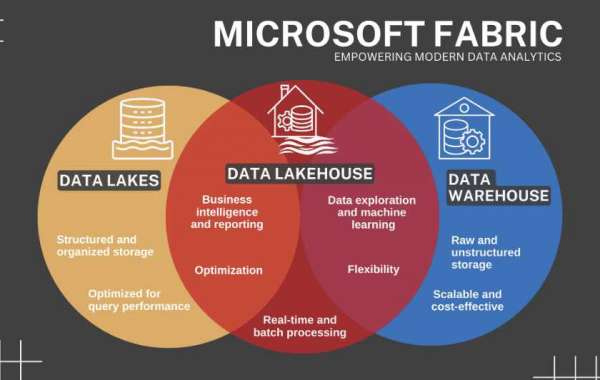Introduction
Securing funding is one of the biggest challenges for startups. Investors receive hundreds of pitch decks every month, yet only a small fraction of them succeed in capturing attention. So, what makes a pitch deck stand out? It’s not just the idea—it’s how effectively you communicate it.
A great pitch deck tells a compelling story, highlights a strong market opportunity, and visually engages investors. However, many founders struggle with designing a professional and persuasive presentation. Poor visuals, cluttered slides, or weak messaging can quickly turn investors away. That’s why leveraging professional pitch deck design services, like Slidepeak, can make a significant difference.
In this guide, we’ll walk through the key components of an effective pitch deck, common mistakes to avoid, and how to tailor your presentation to different investors. Whether you’re preparing for angel investors, venture capitalists, or crowdfunding, this article will give you actionable insights to maximize your chances of securing funding.
What Is a Pitch Deck and Why Does It Matter?
A pitch deck is a short, visually compelling presentation that entrepreneurs use to showcase their business to potential investors. Think of it as a storytelling tool—your opportunity to convince investors that your startup has high growth potential and is worth their investment.
Why is a pitch deck so important?
Investors make decisions quickly. On average, they spend just 3 minutes and 44 seconds reviewing a pitch deck. If your slides aren’t clear, engaging, and persuasive, they’ll move on to the next opportunity.
Real-world examples of successful pitch decks
Some of the biggest companies today started with simple yet powerful pitch decks:
- Airbnb: Their pitch deck was only 10 slides long, yet it effectively highlighted their market opportunity and business model.
- Uber: Focused on market size and scalability, showing clear projections for investor confidence.
- Buffer: Used data-driven slides to prove traction and attract funding.
A well-designed pitch deck isn’t just about aesthetics; it’s about clarity, storytelling, and persuasion. If your slides look unprofessional or fail to communicate key points concisely, investors may assume the same about your business. That’s why working with experts like https://slidepeak.com/pitch-deck-design can help you create a polished, high-impact presentation.
Key Elements of a Successful Pitch Deck
A well-structured pitch deck follows a logical flow that guides investors through your business model, market potential, and competitive edge. While every startup is unique, the best pitch decks typically include the following essential slides:
1. Problem Statement
- Clearly define the problem your startup is solving.
- Use data or real-world examples to highlight the urgency of the issue.
- Keep it concise—investors should immediately understand why this problem matters.
Example: If you’re launching a food delivery app, you could show statistics on how busy professionals struggle to find healthy meal options.
2. Your Solution
- Introduce your product or service as the answer to the problem.
- Explain how it works in simple terms.
- Emphasize what makes your solution different and more effective.
Example: "Our AI-powered meal planning app curates personalized nutrition plans, ensuring users get fresh, tailored meals without the hassle of meal prep."
3. Market Opportunity
- Show investors the size and growth potential of your market.
- Use credible sources to back up your claims.
- Investors want to see that there’s a large, growing market for your product.
Example: “The online food delivery market is projected to reach $500 billion by 2027, growing at 10% annually.”
4. Business Model
- Explain how your startup makes money.
- Use a simple revenue model: Subscription-based, commission-based, freemium, etc.
- Highlight pricing strategy and expected margins.
Example: “We charge a $10 monthly subscription fee, with a projected 40% profit margin per user.”
5. Traction & Milestones
- Investors love proof of progress. Show your traction through key metrics:
- User growth
- Revenue milestones
- Partnerships or early adopters
- If you're pre-revenue, focus on pilot programs, waitlist numbers, or product development milestones.
Example: “In the last six months, we’ve grown from 1,000 to 50,000 users with a 20% monthly retention rate.”
6. Competitive Analysis
- Identify your key competitors and explain how your startup stands out.
- Use a comparison table to showcase unique advantages.
- Highlight factors like pricing, technology, or customer experience.
| Feature | Your Startup | Competitor A | Competitor B |
|---|---|---|---|
| AI meal planning | ✅ | ❌ | ❌ |
| Subscription fee | $10/month | $15/month | $12/month |
| Healthy meal focus | ✅ | ❌ | ✅ |
7. Financial Projections
- Provide realistic revenue forecasts for the next 3-5 years.
- Break it down into revenue streams, expenses, and expected growth.
- Be prepared to justify your numbers with data.
Example: “We project $5M in revenue by Year 3, with a gross margin of 60%.”
8. The Team
- Investors don’t just invest in ideas—they invest in people.
- Highlight key team members, their experience, and why they are the right fit to execute the vision.
- If you have advisors or industry experts backing you, mention them.
9. Funding Ask & Use of Funds
- Clearly state how much funding you are raising.
- Break down how you will use the money (e.g., product development, marketing, hiring).
- Show expected ROI for investors.
Example:
Funding Needed: $2M
- 50% – Product development
- 30% – Marketing & user acquisition
- 20% – Team expansion
The Role of Design in a Persuasive Pitch Deck
A great pitch deck is more than just content—it’s how you present it. Even the best business ideas can be overlooked if the presentation is cluttered, hard to read, or visually unappealing. Here’s why design matters:
1. First Impressions Matter
- Investors skim through decks quickly, so clarity and aesthetics are crucial.
- A messy design suggests a lack of professionalism.
2. Simplicity is Key
- Use minimal text and more visuals (graphs, charts, product mockups).
- Avoid overloading slides with too much information.
3. Consistency & Branding
- Stick to a cohesive color scheme and font throughout the deck.
- Align your design with your startup’s branding.
4. The Power of Storytelling
- Use compelling visuals to emphasize key points.
- Make sure each slide flows smoothly into the next.
5. Get Professional Help
Many startups struggle with creating an investor-ready pitch deck. That’s why professional pitch deck design services like Slidepeak can be a game-changer. They help transform raw content into a polished, investor-friendly presentation that stands out.







